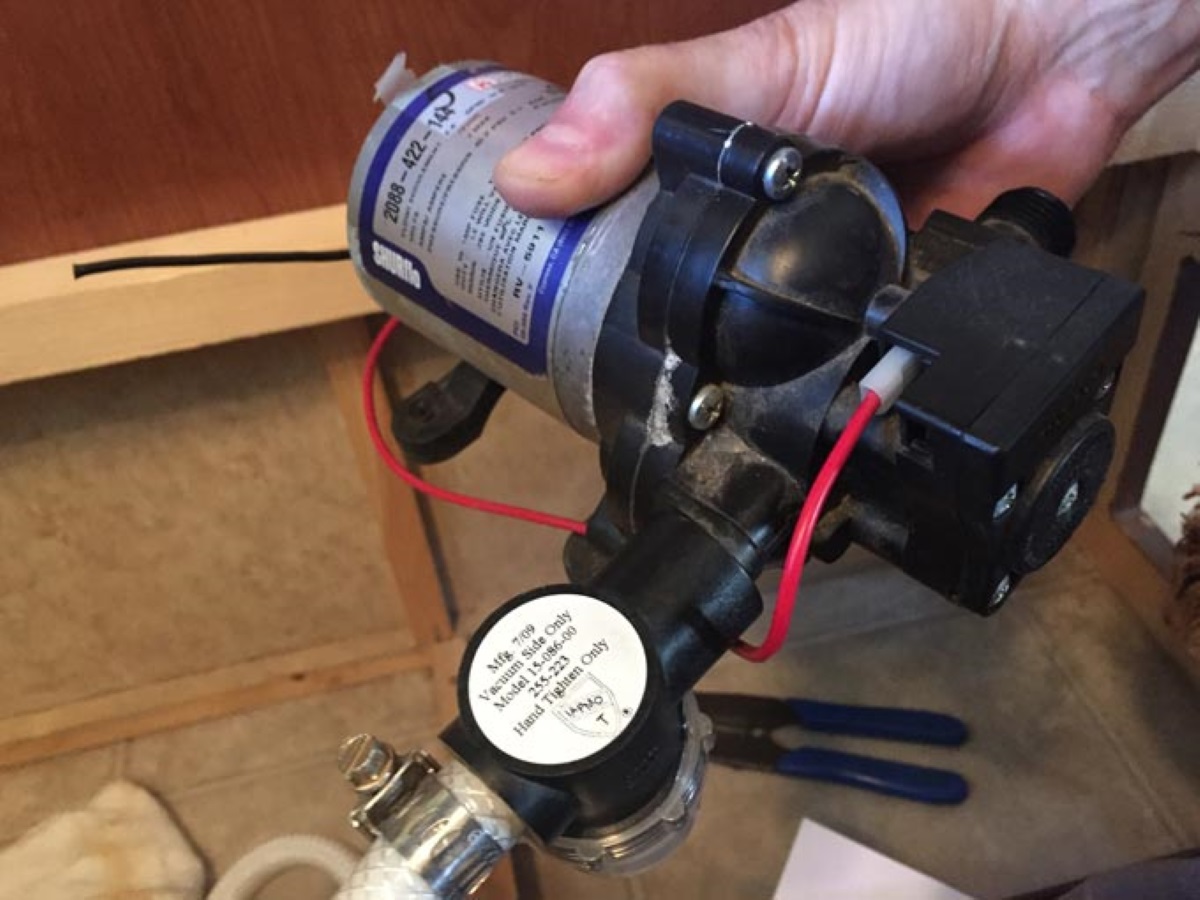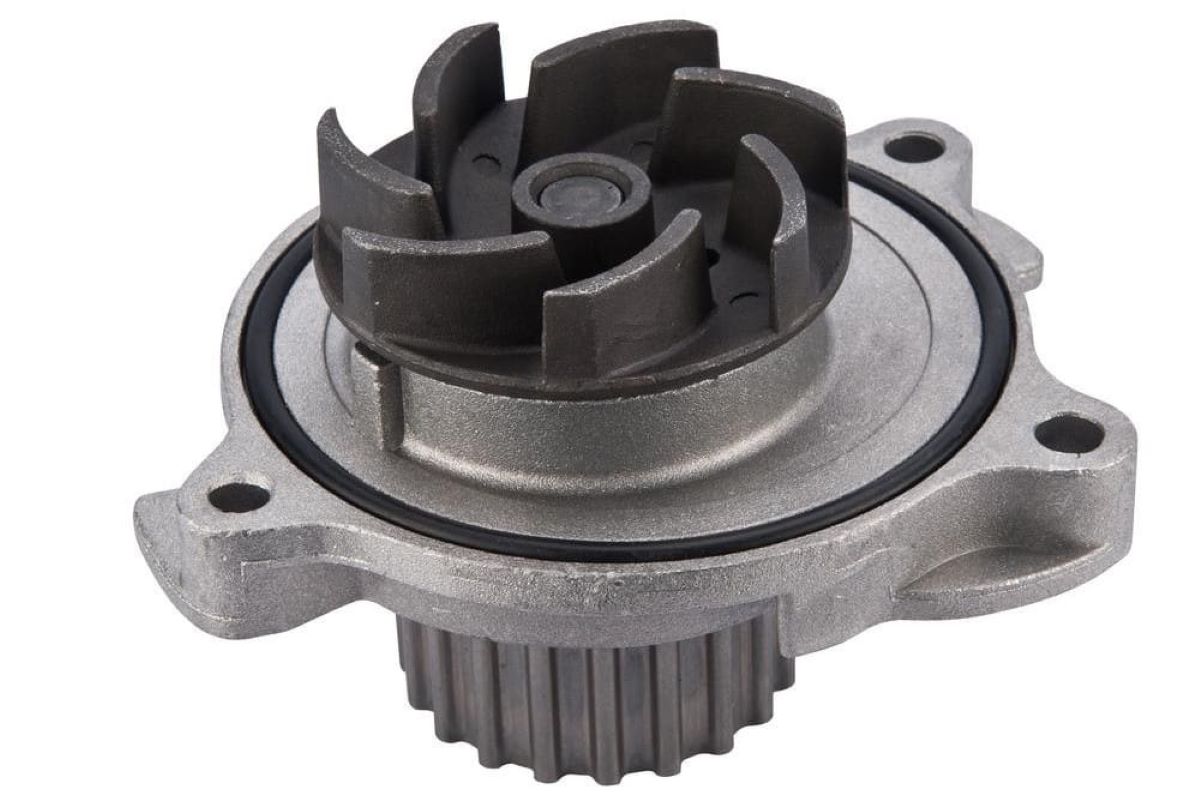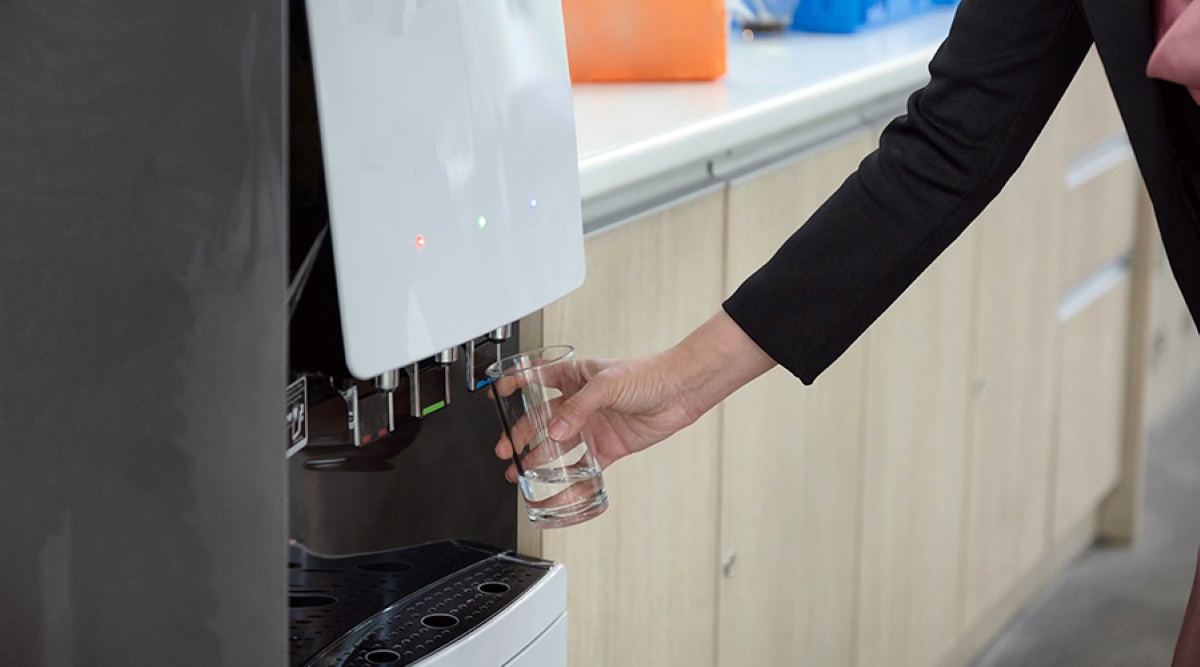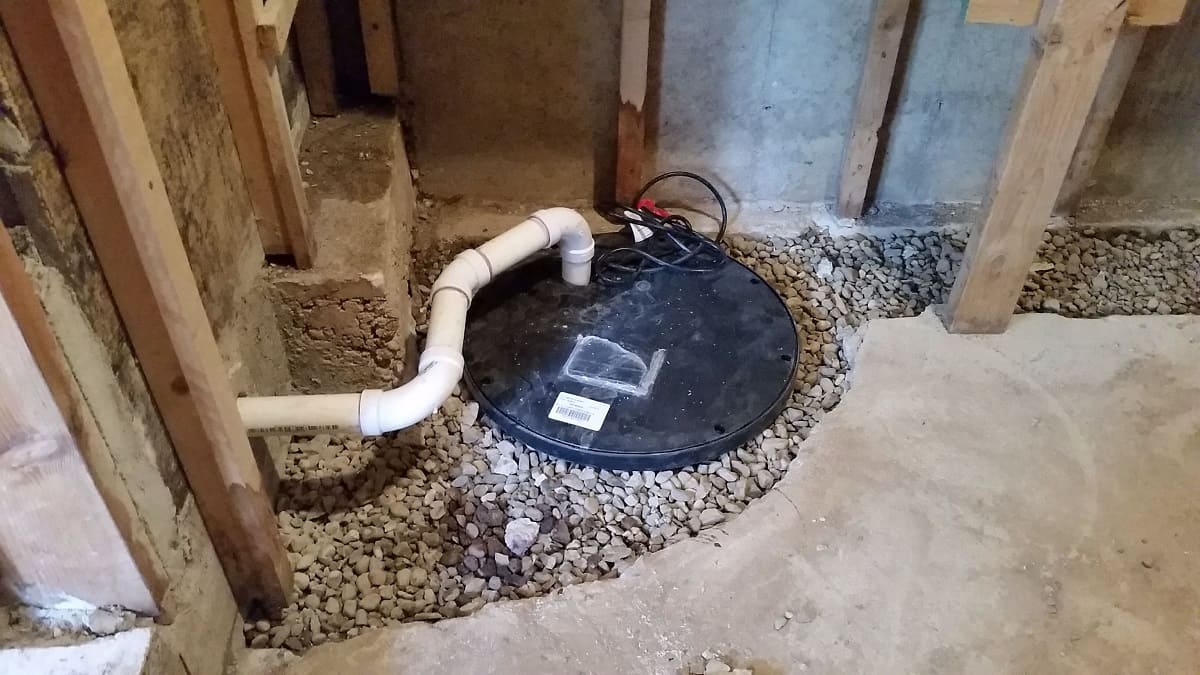

Articles
How Does Car Water Pump Work
Modified: October 20, 2024
Discover how car water pumps work and learn more about them in our informative articles.
(Many of the links in this article redirect to a specific reviewed product. Your purchase of these products through affiliate links helps to generate commission for Storables.com, at no extra cost. Learn more)
Introduction
Welcome to the fascinating world of car water pumps! While often overlooked, these small yet crucial components play a vital role in keeping our vehicles running smoothly. A car water pump is responsible for circulating coolant throughout the engine to maintain optimal operating temperatures. Without a functioning water pump, the engine can overheat, leading to severe damage and potential breakdowns.
In this article, we will delve into the inner workings of a car water pump, exploring its components, functions, types, working principles, and common issues. By gaining a deeper understanding of how this essential component operates, you can better grasp its importance and take appropriate measures for maintenance and care.
So, let’s embark on this journey to unravel the mysteries of car water pumps and discover the integral role they play in the overall performance and longevity of our vehicles.
Key Takeaways:
- Car water pumps are essential for maintaining optimal engine temperatures and preventing overheating. Understanding their components, functions, and common issues is crucial for proactive maintenance and avoiding costly repairs.
- Regular maintenance, timely replacement, and proper care of car water pumps are vital for ensuring the longevity and efficiency of the vehicle’s cooling system. Following manufacturer recommendations and addressing any signs of water pump issues promptly is key to preventing engine damage.
Read more: How Does Water Pump Work
Components of a Car Water Pump
A car water pump consists of several key components that work together to facilitate the circulation of coolant throughout the engine. Understanding these components will give you insight into how the water pump functions and what to look out for in case of any issues. Here are the main components of a car water pump:
- Impeller: The impeller is the heart of the water pump. It is a rotating disc with curved blades that create centrifugal force to push the coolant through the system. The impeller is typically made of durable materials such as cast iron or aluminum to withstand the demands of constant rotation.
- Shaft: The shaft connects the impeller to the driving mechanism, usually the engine crankshaft or serpentine belt. It transmits the rotational force from the engine to the impeller, ensuring proper coolant circulation.
- Housing: The housing encloses the impeller and creates a sealed chamber where the coolant flows. It also provides a mounting point for the water pump assembly.
- Gasket: The gasket serves as a seal between the water pump and the engine block or timing cover. It prevents coolant leaks and maintains the pressure within the system.
- Bearing: The bearing supports the rotating shaft, allowing it to spin freely. It is crucial for smooth operation and longevity of the water pump.
- Seal: The seal prevents coolant from leaking out of the water pump assembly. It is commonly a rubber or silicone material that creates a watertight barrier.
- Pulleys and Belts: In some designs, the water pump is driven by a pulley connected to the engine crankshaft or a serpentine belt. These components transfer the rotational force from the engine to the water pump.
These components work together to ensure the efficient and reliable circulation of coolant throughout the engine, maintaining optimal temperatures and preventing overheating. Understanding the role of each component will help you identify potential issues and take appropriate action to keep your car’s water pump in top condition.
Function of a Car Water Pump
The function of a car water pump is to circulate coolant throughout the engine, regulating its temperature and preventing overheating. It plays a critical role in the overall cooling system of the vehicle. Let’s dive into the details of how a car water pump functions:
When the engine runs, it generates heat as a byproduct of internal combustion. This heat can reach dangerously high levels, which can potentially damage the engine components. The coolant, a mixture of water and antifreeze, absorbs this heat and carries it away from the engine, allowing it to operate at optimal temperatures.
The water pump is responsible for creating the necessary circulation of coolant. It draws coolant from the radiator or coolant reservoir and pushes it into the engine block through the inlet pipe. The impeller, connected to the shaft, rotates rapidly, creating centrifugal force that propels the coolant towards the engine.
As the coolant enters the engine, it flows through passages known as coolant jackets or coolant channels, which surround various engine components, such as the cylinders and cylinder head. These channels absorb the heat generated by the engine, allowing the coolant to cool down.
Once the coolant has absorbed the heat, it returns to the water pump through the outlet pipe, which is connected to the radiator or coolant reservoir. The impeller pushes the now-cooled coolant out of the engine and back into the radiator, where it releases the heat to the surrounding air.
The process of circulating coolant through the engine and radiator is continuous while the engine is running, ensuring that the temperature remains within the optimal range. This prevents overheating and potential damage to the engine components.
In addition to its primary function of coolant circulation, some car water pumps also contain mechanisms for regulating coolant flow. For example, a thermostat may be incorporated into the water pump assembly to control the amount of coolant that enters the engine based on its temperature. This helps to achieve faster warm-up times and optimize fuel efficiency.
Overall, the function of a car water pump is to maintain the proper temperature balance within the engine by circulating coolant and dissipating the excess heat. Without a functioning water pump, the engine would quickly overheat, leading to potential breakdowns and engine damage.
Types of Car Water Pumps
Car water pumps come in different types, each designed to suit specific engine configurations and cooling system setups. Let’s explore the most common types of car water pumps:
- Mechanical Water Pump: This is the traditional type of water pump commonly found in older vehicles. It is directly connected to the engine crankshaft through a pulley and belt system, relying on the engine’s rotation for coolant circulation. Mechanical water pumps are typically more straightforward in design and easier to maintain.
- Electric Water Pump: Electric water pumps are becoming increasingly popular in modern vehicles. Instead of being mechanically driven, they are powered by an electric motor. Electric water pumps offer more precise control of the coolant flow and allow independent operation from the engine. They are commonly found in hybrid vehicles and high-performance applications.
- Auxiliary Water Pump: An auxiliary water pump is an additional pump that supplements the main water pump. It is commonly used in vehicles with complex cooling systems, such as those with turbochargers, intercoolers, or heaters that require additional coolant flow. Auxiliary water pumps can be mechanical or electric, depending on the vehicle’s design.
- Reverse Rotation Water Pump: In some engine configurations, such as V6 or V8 engines, the water pump needs to rotate in the opposite direction compared to the standard rotation. Reverse rotation water pumps are designed specifically for such engine setups, ensuring proper coolant circulation and cooling efficiency.
It’s important to note that the choice of water pump type depends on various factors, including the vehicle’s engine specifications, cooling system requirements, and manufacturer recommendations. When replacing a water pump, it’s crucial to select the correct type and ensure compatibility with the specific vehicle model.
Additionally, water pumps are available in different sizes and capacities to accommodate engines of varying displacements and cooling demands. It’s essential to choose a water pump that matches the engine’s cooling needs to ensure optimal performance and prevent overheating.
By understanding the different types of car water pumps, you can make informed decisions when it comes to maintenance, upgrades, or replacements, ensuring that your vehicle’s cooling system operates at its best.
Working Principles of a Car Water Pump
The working principles of a car water pump involve a combination of mechanical and hydraulic processes to ensure proper coolant circulation. Let’s delve into the details of how a car water pump operates:
1. Impeller Rotation: The water pump’s impeller, located inside the housing, is connected to the engine’s crankshaft or driven by a belt and pulley system. As the engine runs, the impeller rotates, creating centrifugal force.
2. Coolant Suction: The rotating impeller creates a low-pressure area, causing coolant from the radiator or coolant reservoir to be drawn into the water pump through the inlet pipe.
3. Centrifugal Force: As the coolant enters the water pump, the impeller’s curved blades accelerate its flow. The rotation of the impeller creates centrifugal force, propelling the coolant outward towards the engine.
4. Coolant Circulation: The coolant flows through passages in the engine block and cylinder head, known as coolant jackets or coolant channels. These passages surround various engine components, absorbing heat and reducing temperatures.
5. Heat Dissipation: Once the coolant has absorbed the heat, it exits the engine through the outlet pipe, returning to the water pump. From there, it is directed to the radiator, where it releases the heat to the surrounding air through the cooling fins.
6. Repeat Process: The coolant, now cooled down, re-enters the water pump through the inlet pipe, and the process repeats in a continuous cycle as long as the engine is running.
It’s important to note that the water pump operation is linked to the engine’s speed. As the engine revs up, the water pump rotates faster, increasing the coolant flow rate for better cooling efficiency. Conversely, at lower engine speeds, the water pump’s rotational speed decreases.
In some car models, there may be additional mechanisms in the water pump assembly to regulate coolant flow. For example, a thermostat can control the amount of coolant entering the engine based on its temperature. This helps to maintain optimal temperature levels and achieve faster warm-up times.
The precise design and configuration of a car water pump can vary depending on the vehicle’s make, model, and engine specifications. It’s crucial to follow manufacturer guidelines and recommendations when it comes to water pump maintenance, replacement, and upgrades.
By understanding the working principles of a car water pump, you can appreciate its role in maintaining proper engine temperatures and avoiding potential overheating issues.
Make sure to regularly check the water pump for any leaks or unusual noises, as these could be signs of a potential issue. Additionally, keeping up with routine maintenance, such as changing the coolant, can help prolong the life of the water pump.
Read more: How Does An Electric Water Pump Work
Common Issues with Car Water Pumps
While car water pumps are essential for maintaining optimal engine temperatures, they are not immune to issues. Here are some common problems that can occur with car water pumps:
- Coolant Leakage: One of the most prevalent issues with water pumps is coolant leakage. This can happen due to a failing seal, gasket, or worn-out bearings. Coolant leakage can lead to low coolant levels, which can cause engine overheating and potential damage if not addressed promptly.
- Impeller Damage: The impeller, being constantly rotated and exposed to coolant flow, can suffer damage over time. Corrosion, erosion, or the buildup of debris can affect the impeller’s performance, reducing the effectiveness of coolant circulation. This can result in inadequate cooling and higher engine temperatures.
- Bearing Failure: The bearings that support the water pump’s rotating shaft can wear out or become damaged. This can cause the shaft to wobble or seize, impairing the water pump’s operation and leading to coolant flow issues. Bearing failure often manifests as unusual noises coming from the water pump area.
- Overheating: If the water pump fails to circulate coolant properly, the engine can overheat. This can occur due to various issues, such as a malfunctioning impeller, worn-out bearings, or coolant leakage. Overheating can lead to significant engine damage if not addressed promptly.
- Insufficient Coolant Flow: In some cases, the water pump may experience reduced coolant flow, resulting in inadequate cooling. This can happen due to blockages or restrictions in the coolant passages or a malfunctioning water pump impeller. Insufficient coolant flow can lead to engine overheating and decreased performance.
- Excessive Noise: A noisy water pump may indicate underlying issues, such as bearing failure or impeller damage. Unusual noises, such as squealing, grinding, or rattling, coming from the water pump area should be inspected and addressed promptly to prevent further damage.
If you notice any of these issues with your car’s water pump, it’s crucial to have it inspected and repaired by a qualified mechanic. Ignoring water pump problems can result in engine damage and costly repairs.
Regular maintenance and timely replacement of the water pump, as recommended by the vehicle manufacturer, can help prevent many of these common issues. Additionally, keeping the cooling system clean, using the correct coolant, and addressing coolant leaks promptly can contribute to the longevity and proper functioning of the water pump.
By staying vigilant and addressing water pump issues promptly, you can ensure that your car’s cooling system remains in optimal condition, keeping the engine running smoothly and preventing overheating-related problems.
Signs of a Faulty Car Water Pump
A faulty car water pump can lead to engine overheating and potential damage if not addressed promptly. Recognizing the signs of a failing water pump can help you take immediate action and prevent costly repairs. Here are some common signs that indicate a faulty car water pump:
- Engine Overheating: One of the primary signs of a failing water pump is engine overheating. If the coolant isn’t circulating properly due to a malfunctioning water pump, the engine temperature can rise to dangerous levels. If your temperature gauge consistently shows above-normal readings or if you frequently experience engine overheating, it could be a sign that your water pump is not functioning correctly.
- Coolant Leakage: Coolant leakage is a clear indicator of a water pump issue. You may notice puddles of coolant underneath your vehicle or visible leaks near the water pump itself. Coolant leakage can be caused by a failing seal, gasket, or damaged pump housing. Low coolant levels can lead to engine overheating, so it’s important to address any coolant leaks promptly.
- Unusual Noises: Unusual noises coming from the water pump area can indicate a problem. These may include squealing, grinding, or rattling sounds. Such noises can be caused by worn-out bearings, a damaged impeller, or loose components within the water pump. If you notice any unusual sounds, it’s best to have your water pump inspected by a professional mechanic.
- Visible Wear or Damage: Inspect the water pump visually for any signs of wear or damage. Look for coolant stains, rust, or corrosion on the pump housing. Check for excessive play or wobbling in the water pump pulley. Any visible damage or abnormalities can indicate a problem with the water pump and should be addressed promptly.
- Erratic Temperature Fluctuations: If you notice that your engine temperature fluctuates erratically, going from hot to cold and back again, it could be a sign of a failing water pump. The inconsistent coolant circulation caused by a malfunctioning water pump can result in these temperature fluctuations. It’s important to address this issue to avoid potential engine damage.
- Steam or Smell of Coolant: If you see steam coming from the engine bay or smell a sweet odor resembling coolant, it may indicate a water pump problem. A coolant leak caused by a faulty water pump can result in steam escaping from the engine compartment. The smell of coolant can also be a sign of leakage. It’s important to identify and fix any coolant leaks as soon as possible.
If you notice any of these signs or suspect a problem with your car water pump, it’s essential to have it inspected and repaired by a qualified mechanic. Ignoring water pump issues can lead to severe engine damage and costly repairs.
Maintaining regular maintenance and following the manufacturer’s recommended service intervals for the water pump can help prevent many issues. Timely replacement of the water pump, using quality coolant, and addressing any coolant leaks promptly can contribute to the longevity and proper functioning of the water pump.
By paying attention to the signs of a faulty car water pump and taking immediate action, you can ensure the proper functioning of your vehicle’s cooling system and avoid potential engine damage.
Maintenance and Care of Car Water Pumps
Maintaining proper care of your car’s water pump is crucial for ensuring its longevity and optimal performance. Here are some maintenance tips to keep your water pump in excellent condition:
- Follow Manufacturer Recommendations: Always refer to the vehicle manufacturer’s guidelines and recommended service intervals for water pump maintenance. Adhering to these recommendations will help you stay on top of regular inspections, replacements, and any other specific maintenance requirements.
- Check Coolant Levels Regularly: Monitor your vehicle’s coolant levels on a regular basis. Low coolant levels can cause the water pump to work harder and lead to overheating. If you notice a significant drop in coolant levels consistently, it may indicate a coolant leak or water pump issue. Have it inspected and fixed promptly.
- Inspect for Coolant Leaks: Routinely check for any signs of coolant leaks in the engine bay, such as visible stains, puddles, or the smell of coolant. Coolant leaks can indicate a failing seal, gasket, or a damaged water pump. Address any leaks immediately to prevent engine overheating and potential damage.
- Inspect the Water Pump Pulley: Regularly inspect the water pump pulley for excessive play, wobbling, or misalignment. Any abnormalities with the pulley can indicate a problem with the water pump or its bearings. If you notice any issues, have it inspected by a professional mechanic.
- Flush the Cooling System: Follow the recommended coolant flush intervals to remove any built-up sediment, debris, or contaminants that can affect the water pump’s performance. Flushing the coolant system will help maintain efficient coolant flow and prevent blockages that can lead to overheating and water pump damage.
- Use the Proper Coolant: Always use the manufacturer-recommended coolant or antifreeze for your specific vehicle. Using the correct coolant will help prevent corrosion, maintain proper lubrication, and ensure optimal performance of the water pump and the entire cooling system.
- Address Cooling System Issues Promptly: If you notice any signs of cooling system issues, such as engine overheating, unusual noises, or inconsistent temperature fluctuations, have it inspected and repaired promptly. Ignoring cooling system problems can lead to water pump failure and potential engine damage.
- Replace the Water Pump as Recommended: Follow the manufacturer’s recommended water pump replacement intervals. Over time, the water pump’s bearings can wear out, and the impeller may become damaged, affecting its performance. Timely replacement will help maintain proper coolant circulation and prevent potential breakdowns.
Regular maintenance and care of your car’s water pump will contribute to its longevity and ensure that your vehicle’s cooling system operates at its best. If you’re unsure about any aspect of water pump maintenance or encounter any issues, consult a qualified mechanic for assistance.
By following these maintenance tips and staying proactive with your car’s cooling system, you can avoid potential water pump problems, prevent engine overheating, and keep your vehicle running smoothly for years to come.
Conclusion
The car water pump may be a relatively small and often overlooked component, but its role in maintaining the proper functioning of the vehicle’s cooling system is crucial. By circulating coolant throughout the engine, the water pump helps regulate temperatures and prevent overheating, ensuring the longevity and performance of the engine.
In this article, we have explored the components, functions, types, working principles, and common issues associated with car water pumps. Understanding how water pumps operate and recognizing the signs of a faulty water pump is essential for taking timely action and preventing engine damage.
Maintaining a regular maintenance routine and following the manufacturer’s recommendations for water pump care will contribute to its longevity and optimal performance. Checking coolant levels, inspecting for leaks, flushing the cooling system, and using the proper coolant are all important steps in keeping the water pump and the entire cooling system in excellent condition.
If you notice any signs of a failing water pump, such as engine overheating, coolant leakage, or unusual noises, it’s crucial to have it inspected and repaired by a qualified mechanic. Ignoring water pump issues can lead to severe engine damage and costly repairs.
By understanding the importance of the car water pump and practicing proper maintenance and care, you can ensure that your vehicle’s cooling system operates efficiently, preventing potential breakdowns and keeping your engine running smoothly.
Remember, a well-maintained water pump is a key component in maintaining the health and longevity of your vehicle’s engine. So, give your car’s water pump the attention it deserves, and enjoy a smooth and reliable driving experience for miles to come.
Frequently Asked Questions about How Does Car Water Pump Work
Was this page helpful?
At Storables.com, we guarantee accurate and reliable information. Our content, validated by Expert Board Contributors, is crafted following stringent Editorial Policies. We're committed to providing you with well-researched, expert-backed insights for all your informational needs.















0 thoughts on “How Does Car Water Pump Work”